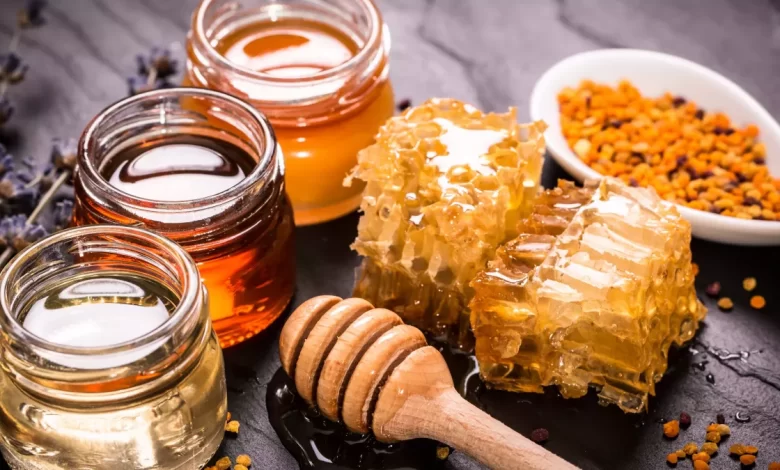Honey, a natural product with multiple culinary uses

This symbol of sweetness with an amber color is a gift from nature. You taste it natural, you cook it to make confectionery or cakes, but it also heals.
Honey (mel in Latin) has been eaten by humans since prehistoric times, as evidenced by millennia-old rock paintings. It is first taken only from natural hives until the first domestic hives appeared about four thousand years ago. Made by bees from nectar, a sweet substance secreted by flowers, this 100% natural, highly nutritious product has long remained the only sweetener used to sweeten food.
Four appellations in France
Not all honeys are equal. Lichi, manuka (a New Zealand shrub), Euphorbia or baobab for example are as rare as they are expensive, without however matching Elvish honey, taken from a Turkish cave, the price of which is around 5,000 € per kilo! In France, four products have protected designations: honey from Alsace (PGI), Corsica (PDO), Fir des Vosges (AOC) and Provence (PGI).
Honey, the ally of nougat
A veritable jewel of the gastronomy of the Provencal Drôme, the white nougat (of the Provençal noga, walnuts), whose first mentions date from the 11th century, would have arrived from the Middle East. Having become a specialty of Montélimar in the 17th century, with almond trees planted in the region, it is subject to strict specifications stipulating that it must contain at least 25% honey, including a minimum of 7% lavender honey harvested in France. This confectionery is one of the thirteen traditional Christmas desserts in Provence.
The secret of certain drinks
Hydromel (Greek hudromeli, literally water and honey) is a mixture of water and honey that has been fermented with yeasts. Widely loved throughout ancient Europe and still widely known in the Middle Ages, it gradually slipped away to make way for wine. Today, its consumption is quite anecdotal, except in Brittany where it is called chouchen. Depending on the residual sugar level, it is classified from dry to liquorous. There is even sparkling mead.
Honey, a food that never expires
It has long been reported that honey dating back millennia was found intact in the pyramids of Egypt. The story is beautiful…but false. What is true, however, is that the food never or nearly expires, owing to its low water content, its high sugar content, and the presence of a natural antibiotic, which prevents the growth of bacteria and fungi.
A honey museum
Created in 1994 by two enthusiasts, the Musée du Miel is located in Midi-Pyrénées, in the heart of a farm with more than a thousand beehives. With an exceptional collection of beehives from around the world, it is also a true conservatory of techniques and traditions related to beekeeping, honey and other bee products. Learn all about the secrets of mead, gingerbread or wax.












